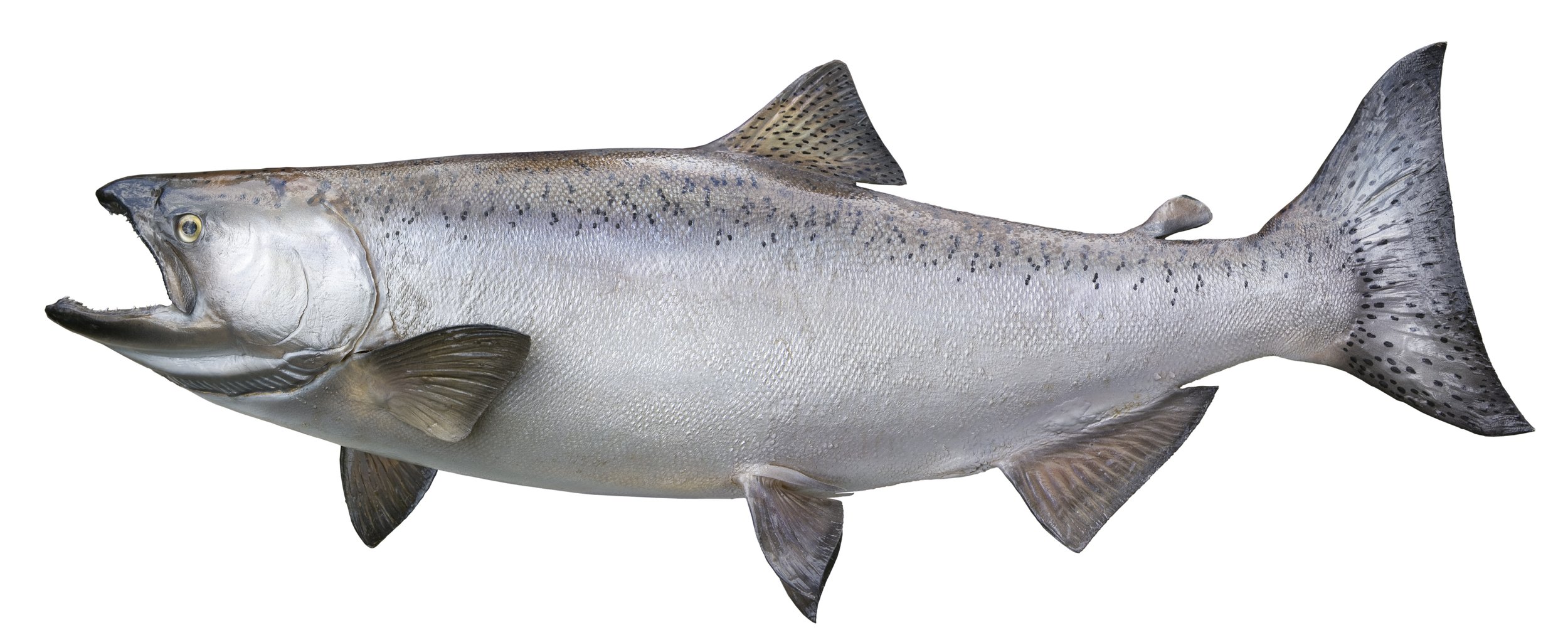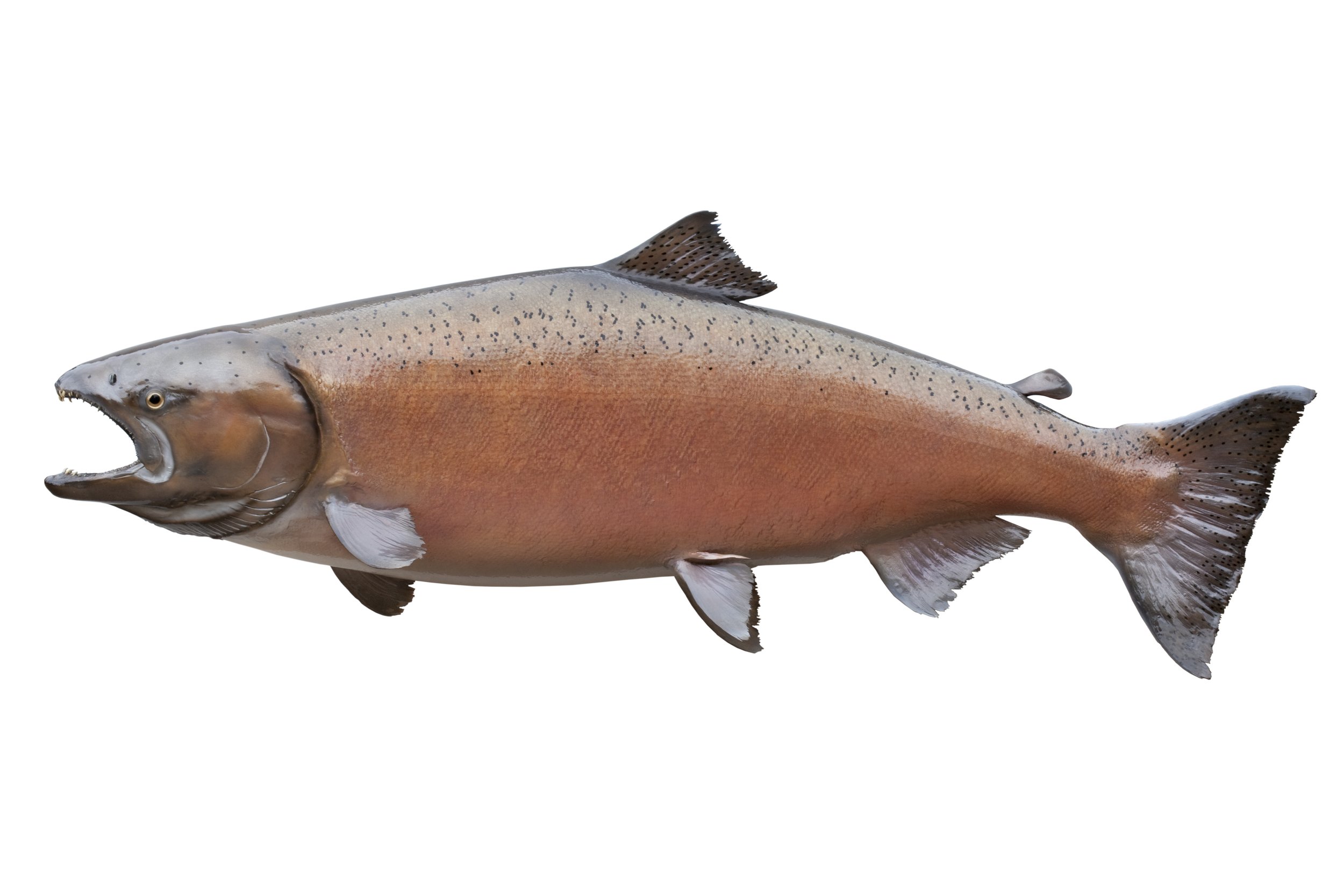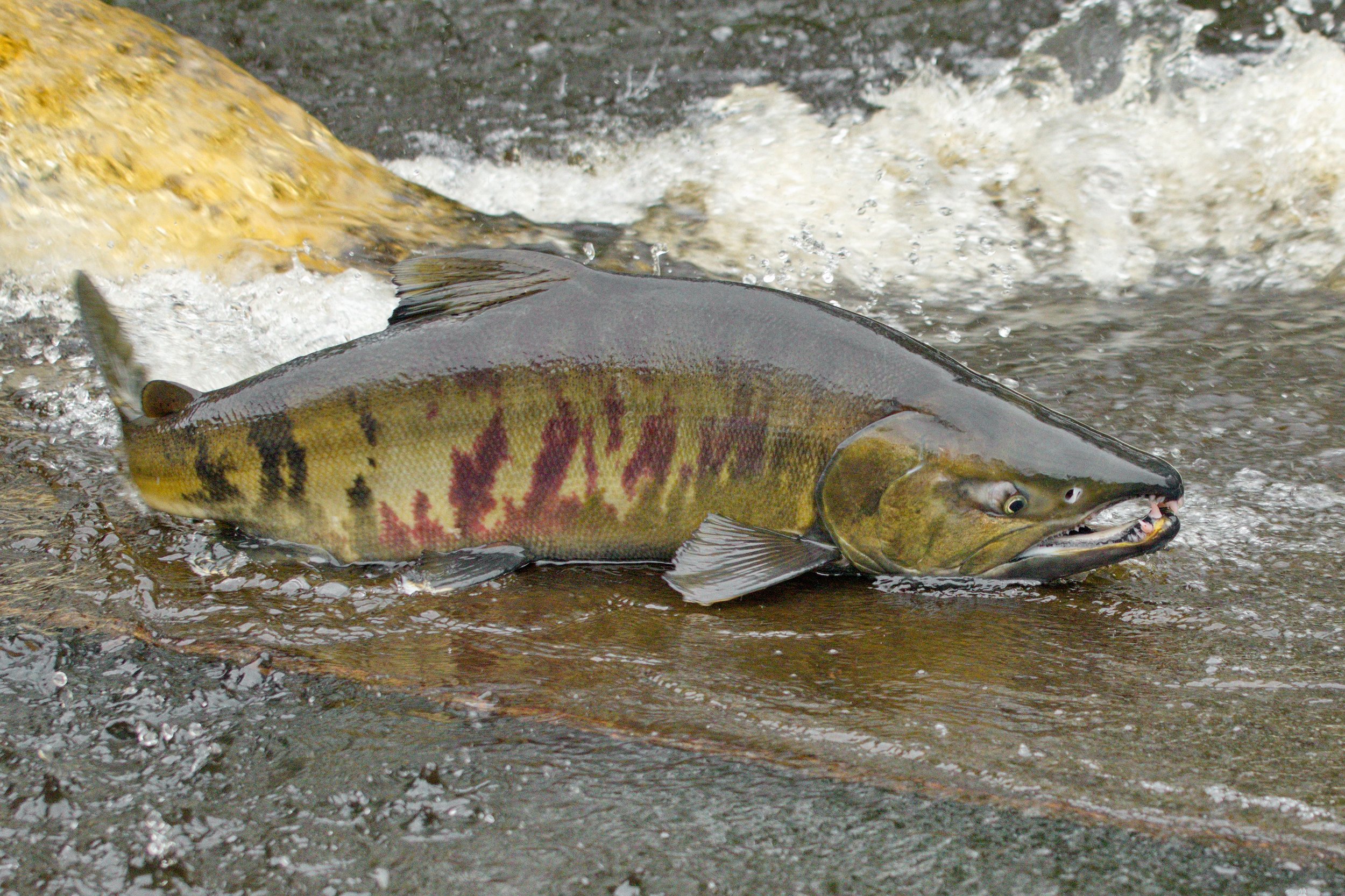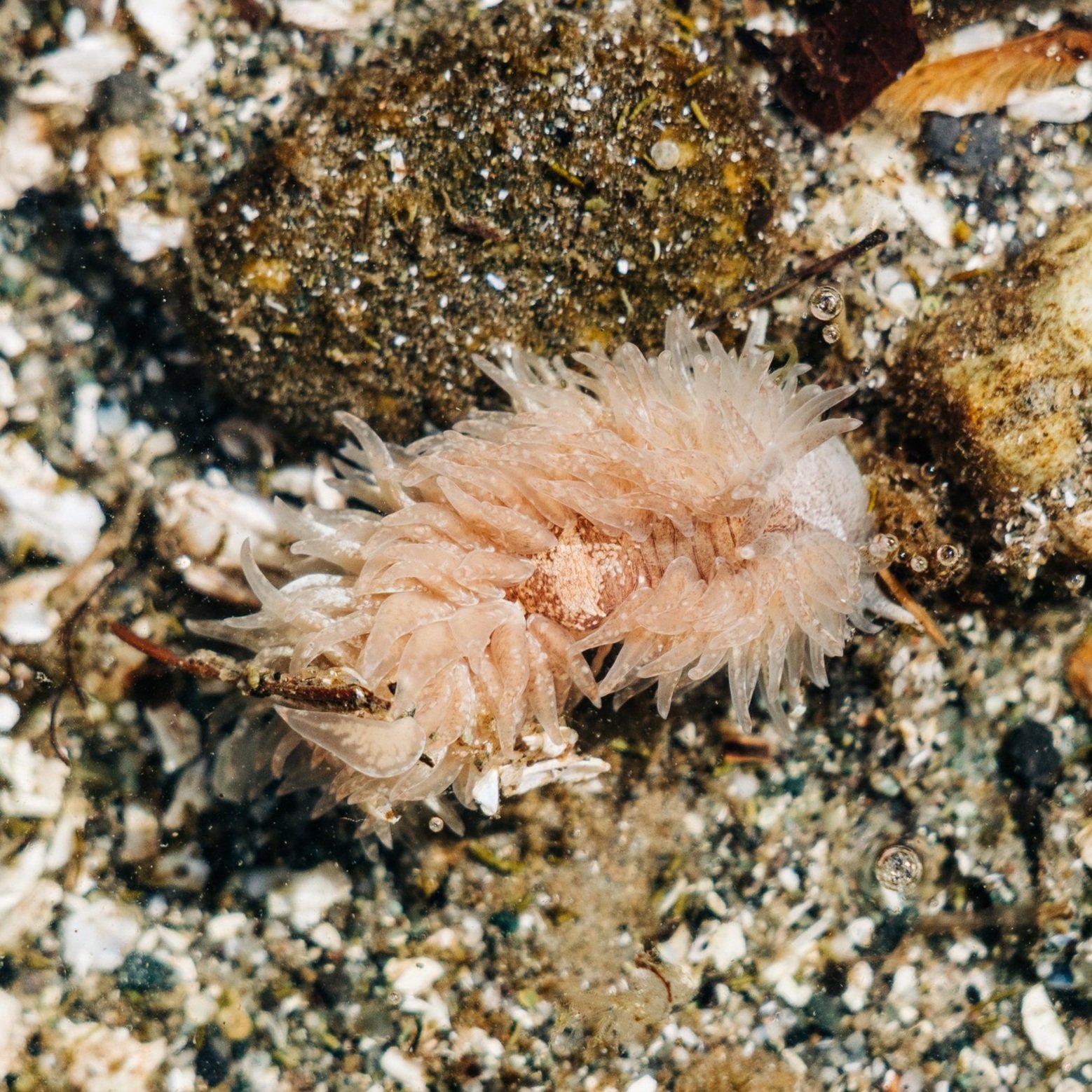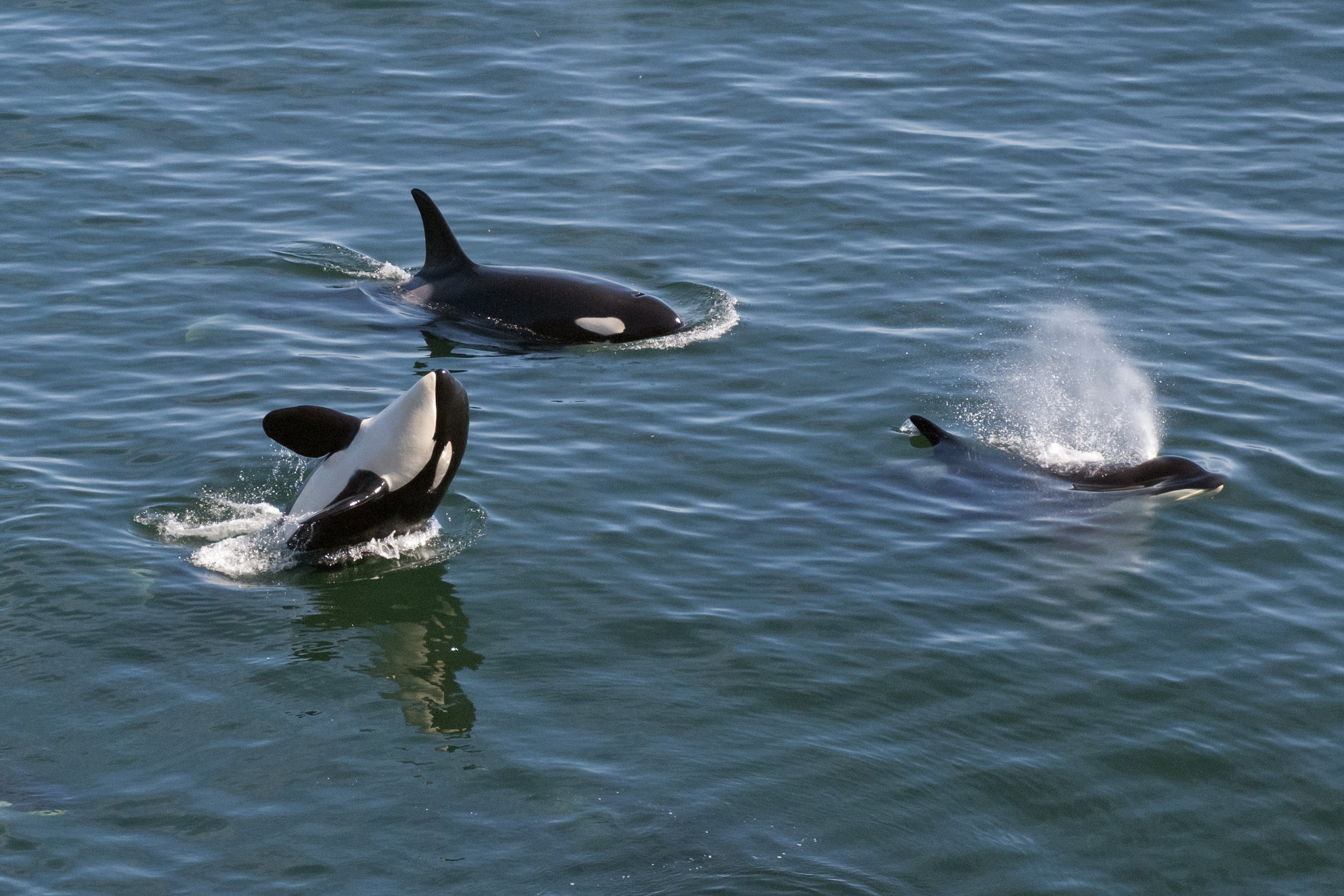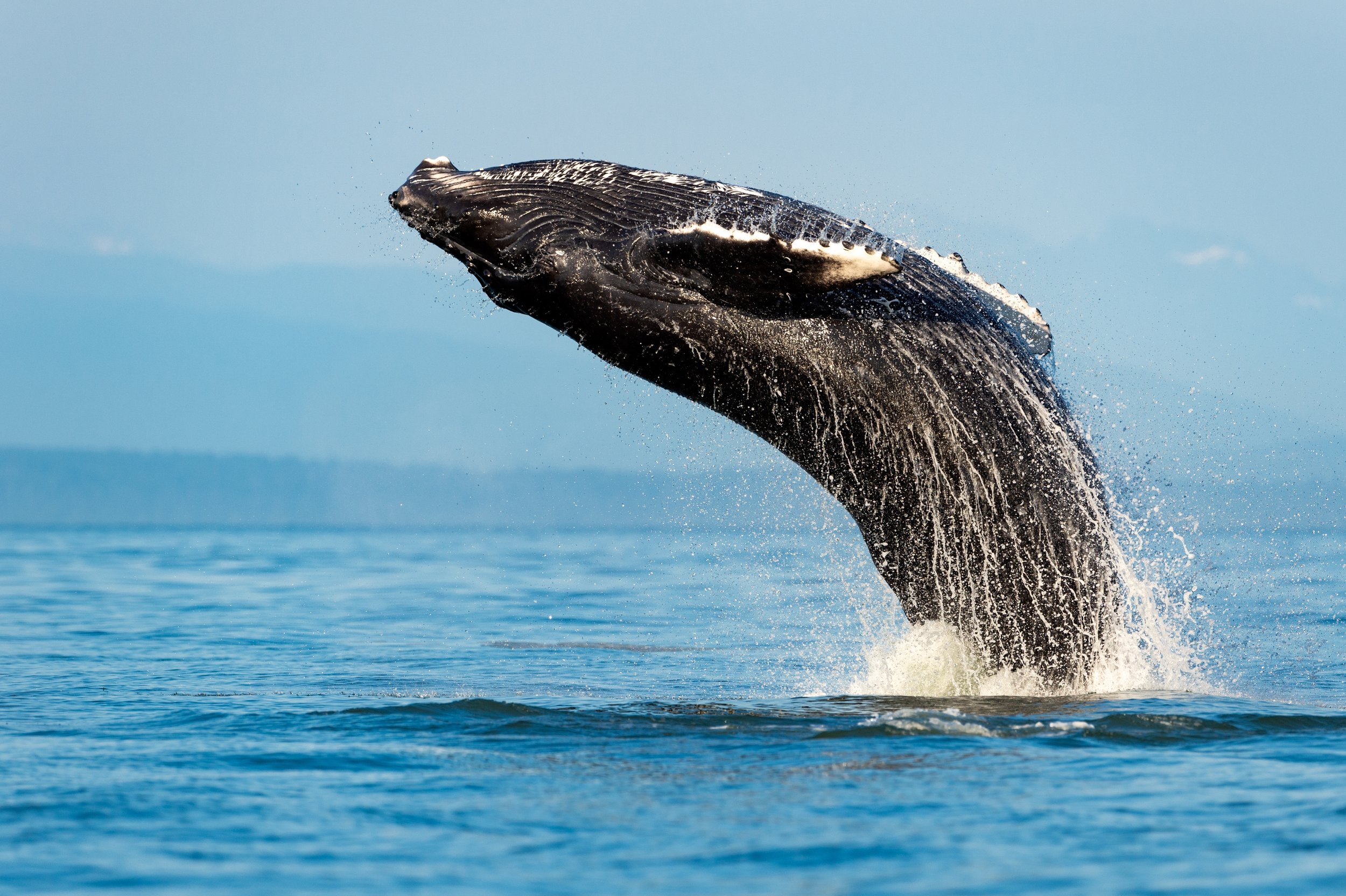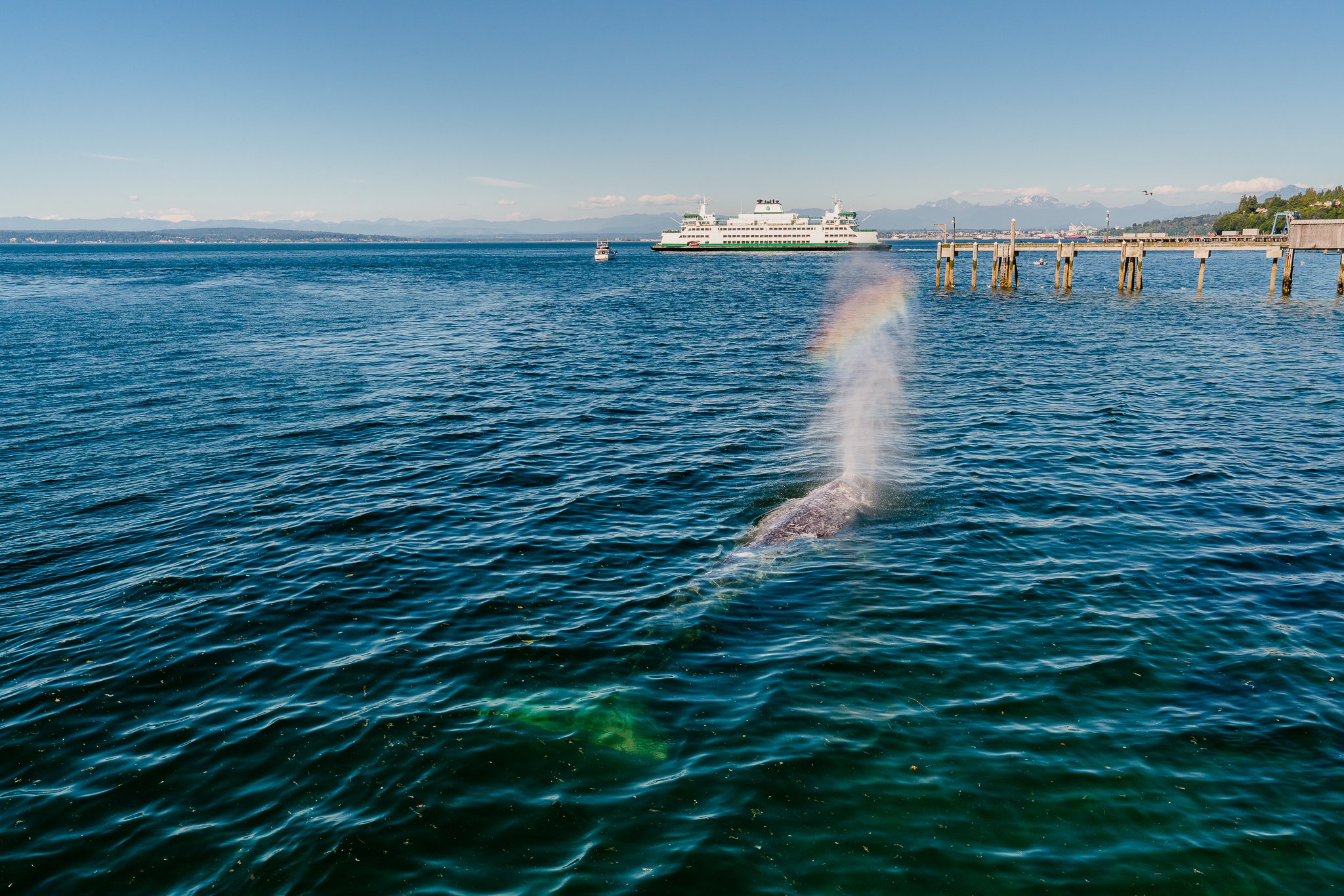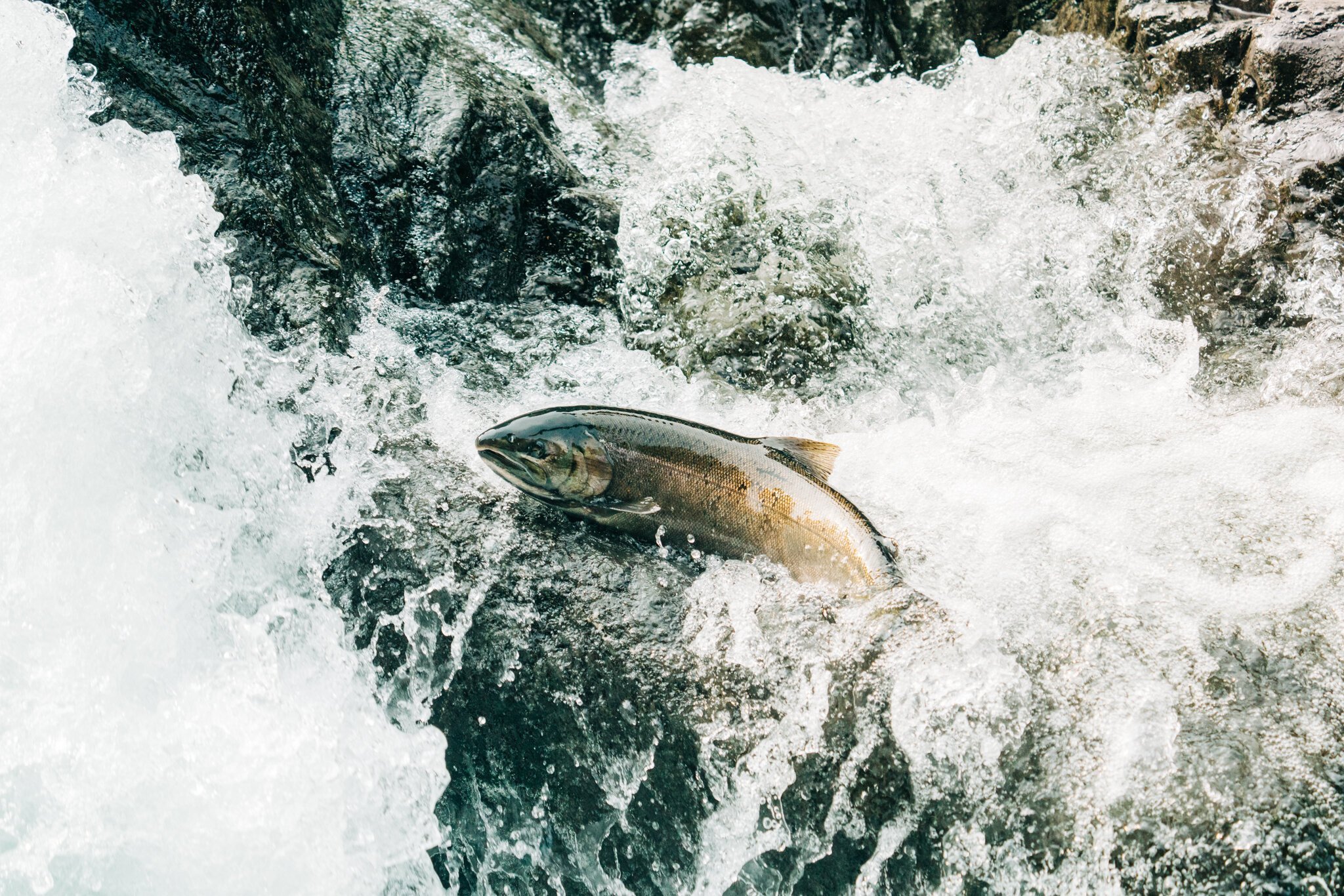Salmon Identification Guide
It’s undeniable that salmon are one of the most important species in the Puget Sound watershed, but do you know how to tell the difference between the five Pacific species?
If you come across a salmon that’s already transformed into its dramatic spawning coloring the differences between species are pretty apparent, but the appearance of salmon in their silver ocean phase is quick a bit trickier to decipher, so (of course!) we had to create an identification guide to make it a little bit easier.
Quick tips before we dive in: If you’re fishing or looking at them very closely the easiest way to decipher the difference is to look in the mouth. First determine if you have a Chinook, with their obvious fully black mouths, and then move on from there. If you’re viewing them from land or trying to identify them from a photograph pay attention to the spotting and tail shapes.
Chinook/King/Blackmouth — Ocean Stage
Jaw — Dark mouth with a black gum line. Prominent teeth.
Tail — Spotting on both the top and bottom of the tail. Silver pigment is present on the tail. Narrow tail base compared to the rest of their body. Moderately forked tail.
Body — Large black spots on back. Average size scales. Small eyes.
Notes — Chinook are also casually called Kings or Blackmouth. True Blackmouth technically refer to juvenile Chinook that live in Puget Sound all year instead of making it out to the ocean. They’re typically seen in the winter months. There are also distinct genetic differences in the stocks of Chinook seen in the spring (springers) vs the fall run.
(Photo: Dan Thornberg/Shutterstock)
Chinook — Spawning Stage
Jaw — Males develop a slight hook, but it’s generally less dramatic than the other salmon species.
Body — Chinook’s transformation is slightly less dramatic overall than other salmon species, however, during their spawning stage they do turn from their silver coloring to a darker orange/bronze/green hue.
(Photo: Dan Thornberg/Shutterstock)
Coho/Silver — Ocean Phase
Jaw — Mouth and gum line are white. Tongue may be black. Gums can have a black lining along the outside. Teeth are sharp and strong.
Tail — A few scattered spots, generally only on the upper portion of the tail. Silver pigment is present. Base of the tail is wide.
Body — Black spots on back. Average size scales.
(Photo: Dan Thornberg/Shutterstock)
Coho — Spawning Phase
Jaw — Upper jaw/nose of the male transforms into a very dramatic, elongated hooked snout with enlarged teeth. Females transform in the same general way, but it’s less pronounced.
Body — Dark green head and back with a maroon body. The change in females is less vibrant.
(Photo: USFWS)
Chum — Ocean Phase
Jaw — Mouth and gum line are white. Tongue may be black. Well developed teeth on both jaw lines, but no teeth on the base of the tongue.
Tail — No spotting on the tail. Silver streaks covering half of the fin along the fin rays, but not between the rays. Narrow base of the tail. Distinctly forked tail.
Body — Metallic bluish green along the back. No prominent spots on body like other salmon species, but small speckles may be visible. Large scales. May see faint vertical bars on the body.
(Photo: iStock/andyKRAKOVSKI)
Chum/Dog — Spawning Phase
Jaw — Hooked nose with large canine-like teeth. Female’s transformation is less pronounced.
Body (female) — Brown to grey coloring with a distinct dark horizontal bar running along the lateral line.
Body (male) — Dark olive to brown coloring with red to purple wavy vertical bars.
(Photo: USFWS)
Pink — Ocean Phase
Generally large black spots on back and heavy oval shaped black blotches on the upper and lower lobes of the tail. White mouth with a black gum line and tongue. Very small scales. No silver pigment on the tail. Flexible (rubbery) lower jaw.
Jaw — Mouth is white. Gums are tongue are black. No teeth on tongue. Has a flexible/rubbery lower jaw.
Tail — Covered in large oval spots. No silver on tail.
Body — Large black spots on back. Small scales.
(Photo: iStock/andyKRAKOVSKI)
Pink/Humpy — Spawning Phase
Jaw — Males develop an elongated snout and large teeth.
Body — Dull green/brown/purple hues on the top 3/4 of the bottom with pale white underneath. Males develop a very dramatic hump.
(Photo: Sara Montour Lewis/Our Wild Puget Sound)
Sockeye — Ocean Phase
No prominent spots on back or tail (small speckles may be present). White mouth with a white gum line and dark tongue. Average size scales. Prominent gold-colored eyes. No silver pigment on the tail. Small teeth.
Jaw — Mouth and gum line are white. Fleshy lips with small teeth. No teeth on the base of the tongue.
Tail — No spots on the tail. Narrow tail base.
Body — No prominent spots on body (some speckles are possible). Average size scales. Prominent gold eyes.
(Photo: iStock/andyKRAKOVSKI)
Sockeye/Red — Spawning Phase
Body — Both males and females develop a dramatic bright red body with a green head. Males develop a hump, an elongated snout and enlarged teeth.
(Photo: Vasik Olga/Shutterstock)

